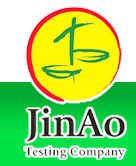Silk, a natural protein fiber spun by silkworms for over 5,000 years, remains synonymous with luxury, elegance, and sophistication. Its unique molecular structure and artisanal production process endow it with unparalleled properties, while its manufacturing complexities and evolving consumer demands shape its future trajectory. This article explores silk’s intrinsic qualities, technical challenges in production, and emerging trends that will redefine the industry over the next five years.
I. The Unique Properties of Silk Fiber
-
Molecular Excellence:
-
Composed primarily of fibroin proteins, silk fibers feature a triangular prism-like structure that refracts light, creating its signature luminous sheen.
-
High tensile strength (comparable to steel by weight) and elasticity enable durability without sacrificing drape.
-
Functional Benefits:
-
Thermoregulation: Natural hygroscopicity allows silk to absorb 30% of its weight in moisture while remaining dry to the touch, ideal for temperature-sensitive apparel.
-
Hypoallergenic: Smooth, non-irritating surface resists dust mites and allergens.
-
Biocompatibility: Amino acids like sericin align with human skin pH, promoting skincare applications.
II. Fabric Characteristics: A Double-Edged Sword
Silk’s allure is tempered by its finicky nature:
-
Delicate Handling: Susceptible to abrasion, UV degradation, and perspiration stains.
-
Shrinkage: Prone to distortion when exposed to water or heat without pre-treatment.
-
Wrinkle-Prone: Creases easily in humid environments unless blended or treated.
-
Variety: Charmeuse’s glossy drape, chiffon’s sheer stiffness, and dupioni’s slubbed texture cater to diverse design needs but require specialized looms.
III. Manufacturing Complexities: Weaving and Dyeing Challenges
-
Weaving Difficulties:
-
Ultra-fine filaments (1–1.3 denier) demand precision warping and low-tension looms to prevent breakage.
-
Slub yarns (e.g., raw silk) necessitate hand-operated jacquard looms for irregular texture retention.
-
Dyeing Limitations:
-
pH sensitivity: Acidic dyes yield vibrant hues but require strict pH control (4.5–5.5) to avoid fiber damage.
-
Temperature constraints: Excessive heat (>85°C) degrades fibroin, limiting colorfastness.
-
Eco-compliance: Traditional mordants (heavy metals) conflict with REACH regulations, driving demand for plant-based alternatives like tannins.
IV. The Future of Silk: 2024–2029 Innovation Pathways
V. Conclusion
Silk’s future lies at the intersection of heritage and hyper-innovation. As sustainability mandates collide with advanced material science, the industry will pivot toward eco-intelligent systems, hybrid functionalities, and digital craftsmanship. Over the next five years, silk will transcend its traditional role in eveningwear, emerging as a cornerstone of tech-luxury, circular fashion, and culturally resonant design—proving that even the oldest fibers can spin the future.
Source: Textile Fabric Knowledge
|


















